By Orçun Göktürk *
On August 6, 1945, the most horrific attack not only in modern times but in the entire history of humanity took place. US warplanes dropped an atomic bomb dubbed ‘Little Boy’ on the Japanese city of Hiroshima. In the massacre, more than half of the city was destroyed, 200,000 people were killed and hundreds of thousands maimed in the first five years.
Curtis LeMay, one of the US Air Force Generals at the time, said, “If we had lost the war, we would all have been tried as war criminals.” (1) In 1946, an official document published by the US Strategic Bombing Survey admitted, “The Japanese would have surrendered even if we had not dropped the atomic bomb.” (2)
The US has never been formally tried as a war criminal or paid any war reparations for the atomic bombs dropped on Hiroshima and Nagasaki.
Does Kishida remember his cousin who was killed by a US bomb?
78 years ago, a 4-year-old boy named Eiji Kishida was walking with his mother near the Hiroshima bridge. Less than two kilometers away, the atomic bomb dropped by the American pilot Enola Gay exploded above them. The boy’s aunt, who was in Hiroshima that day, described what she saw when she found Eiji a short time later: “His little body was unrecognizable, a melted piece of flesh. He continued to beg for water in a weak voice until death released him from the pain.” (3)
More than almost 80 years after the worst massacre in human history, Hiroshima rolled out the red carpet for the US administration in town for the G7 Summit. At one end of the red carpet in Hiroshima stood the President of the United States and at the other end stood Japanese Prime Minister Fumio Kishida, a “loyal ally” of the United States and also cousin of Eiji Kishida, who was murdered by the US army at the age of 4…
Main agenda: Russia and China
While Kishida rolls out the red carpet for the murderers of the Japanese people and even his own relatives, international developments continue to be unfavorable for both his country and the G7 group. At a time when international problems such as the ongoing contraction in the world economy after the Covid-19 pandemic, the deteriorating supply chain, the risk of US default and failing banks, the increasing likelihood of recession in the global economy, high debt risk and foreign exchange shortages, especially in the countries of the global South, etc., the main agenda item of the G7 summit was again China and Russia instead of all these.
In the final declaration of the G7 Hiroshima Summit, the first item on the agenda was “Support Ukraine in the face of Russia’s illegal aggression for as long as necessary”. Immediately after that, it was “Supporting a free and open Indo-Pacific and opposing unilateral attempts to change the status quo through force or coercion” against China.
The declaration threatened countries that support Russia with the words “We will deny G7 technology, industrial equipment and services to those who support the Russian war machine”, and ‘warned’ Beijing about its “militarization activities” and “expansionist maritime” claims in the South and East China Seas. (4)
Articles 51 and 52 of the communiqué targeted China in more detail, stating that “member states must resist China’s economic pressures”. It spoke of the “geopolitical challenges posed by China” and stated that “G7 members will act individually and collectively to invest in their own economic dynamism to reduce overdependence in key supply chains and work to address the challenges posed by China’s non-market policies and practices that distort the global economy.” Western black propaganda on Hong Kong, Tibet, Xinjiang, Taiwan and the South China Sea was parroted again.
‘The old world is dying’
Gramsci, the famous Italian revolutionary, said, “The old world is dying and the new world is struggling to be born.” I think this is the first analogy that comes to mind when looking at the G7. Once a “club of rich nations” that accounted for 70% of the world economy, the G7 has been facing a serious existential crisis in recent years as its economic weight and political appeal have waned.
Russia is mentioned 23 times and China 20 times in the G7 final declaration. The succession of “Ukraine” and “Indo-Pacific” in the declaration is another indication that oppressed nations from Russia to the Taiwan Strait are on the same front.
Response to the summit came immediately from Russia and China. The Chinese Foreign Ministry criticized the United States, which it described as “the biggest bully”, for engaging in “coercive diplomacy” (5), while Russian Foreign Minister Lavrov stated that “the G7 aims to encircle Russia and China bilaterally” and that “the United States is pushing the G7 Group to make Russia lose in Ukraine.” (6)
As the ‘Old World’ dies in Hiroshima, the ‘New World’ revives in Xi’an
In line with the US strategy of encircling China and Russia, countries like South Korea and Ukraine were invited to the G7 Summit. In response, China organized the China-Central Asia Summit in Xi’an, the ancient capital where the ancient Silk Road began. Thus, the heart of the intensifying geopolitical conflict beat in Hiroshima and Xi’an.
One of the main topics of the meeting was the “Global Development”, “Global Security” and “Global Civilization” Initiatives of Chinese President Xi Jinping, which put the Belt and Road Initiative into flesh and blood. In this context, the 5 major countries of Central Asia (the summit was attended by the leaders of Kazakhstan, Kyrgyzstan, Tajikistan, Uzbekistan and Turkmenistan) were seen to be aware of the need to develop a common understanding with China that they need to support each other to counter security risks and realize the modernization and development of their countries. Opening the summit, Xi delivered a keynote speech entitled “working together for a China-Central Asia Community with a shared future characterized by mutual assistance, common development, universal security and eternal friendship.” (7)
While the US is trying to revive the “dying old world” partnership in Hiroshima, which it destroyed 78 years ago, in Xian, the leaders of the Central Asian countries, called “the heartland of the world”, continued to lay the stones for a Chinese-led exit from the “US-centered” world. After the “shameful” US withdraw from Afghanistan two years ago, the initiative for the development and reconstruction of Central Asia has shifted to the countries of the region and China. While the old world continued to “die” in Hiroshima among the traces of the atomic bomb, the new world continued to come alive in Xian. Those who still adhere to neoliberal dogma with the loyalty of a true believer, of course, fail to realize that the pyramid of the unipolar international order has been inverted.
‘China-Russia confrontation in Central Asia’?
The “China-Russia confrontation in Central Asia,” arguments expressed on Western media, on the other hand, are theses that come from the rhetoric of a decaying system and have no real basis in reality. In early 2022, Russia intervened militarily against the attempted color revolutionary uprising in Kazakhstan in accordance with the Collective Security Treaty Organization (CSTO), while China responded politically and economically by continuing to support the Kazakhstan government. Moreover, China, through the Shanghai Cooperation Organization (SCO), conducted joint military exercises with Russia and the countries in the region to develop mechanisms for joint military cooperation against both the attempts of a color revolution in Kazakhstan and possible terrorist acts that may arise after the US withdrawal from Afghanistan. Moreover, the presence of US-backed separatist groups in the Khorasan region of Afghanistan, close to the Xinjiang-Uyghur Autonomous Region, requires China to strengthen its military presence in the region.
Well, in other words, there is no “conflict between Russia and China in Central Asia” as the American elites claim. On the contrary, they share military, economic and political common ground. Both countries know very well that any pro-US “color revolution” would benefit neither China nor Russia.
The world is bigger than the G7
Today, the G7 is one of the major obstacles to international prosperity and development. Forced to serve US strategic interests, this “club of lonely hearts” must set a new course. Will the countries in the G7, with the exception of the US, follow the US, escalating geopolitical conflict and desperately trying to block the rise of the “New World” with every last drop of blood? Or will it look for ways to take its place of honor in the new international order? The peaceful development of China, Russia’s successful struggle against NATO and its apparatus in Ukraine, and the emerging countries of Türkiye, Iran, India, Brazil, etc. continue to sound the death knell of US supremacy. For the G7, it is a question of “to be or not to be” for itself.
* Participant of International Master of Public Administration, Future Leaders program, Tsinghua University, Beijing / China
Sources
- http://www.errolmorris.com/film/fow_transcript.html
- https://apps.dtic.mil/dtic/tr/fulltext/u2/a421958.pdf
- https://www.wsj.com/articles/in-hiroshima-biden-will-meet-leader-whose-family-knew-atomic-bomb-tragedy-db677b53
- https://www.whitehouse.gov/briefing-room/statements-releases/2023/05/20/g7-hiroshima-leaders-communique/
- https://www.globaltimes.cn/page/202305/1291028.shtml
- https://tass.com/politics/1620575
- https://www.mfa.gov.cn/eng/zxxx_662805/202305/t20230519_11080116.html







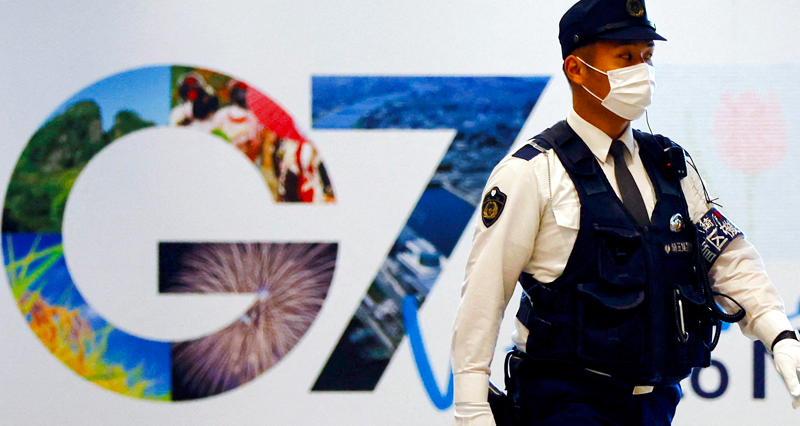

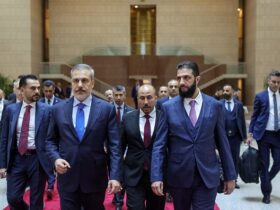


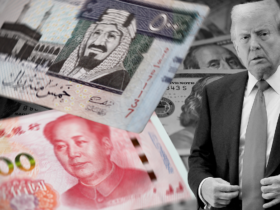
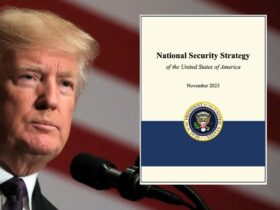
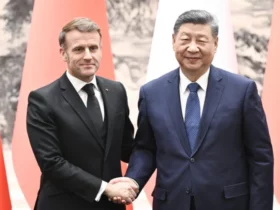


Leave a Reply